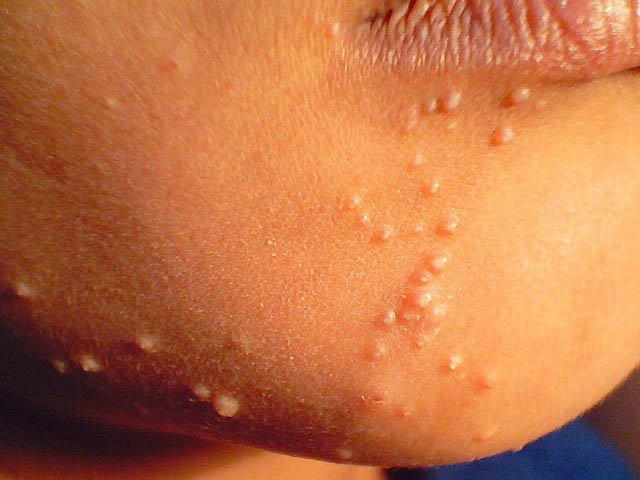No products in the cart.
Blog, Procedures, Skin Diseases, The Miami Center for Dermatology
Molluscum Contagiosum: How Can You Treat It?
Molluscum Contagiosum Miami Treatment
 What is Molluscum Contagiosum?
What is Molluscum Contagiosum?
Typically found in children, this viral infection appears as small, pearl shaped spots. A virus, similar to the wart virus, causes this condition and it is spread by direct contact, or even indirectly from swimming pools or sharing towels. Although the molluscum may go away by themselves with time, they can spread and proliferate very rapidly. Molluscum Contagiosum Miami Treatment is recommended once diagnosed. This consists of a topical medicine application, or removal with a curette tool performed at office visits spaced 2-3 weeks apart.
Causes, incidence, and risk factors
Molluscum contagiosum is caused by a virus that is a member of the poxvirus family. You can get the infection in a number of different ways. This is a common infection in children and occurs when a child comes into direct contact with a lesion. It is frequently seen on the face, neck, armpit, arms, and hands but may occur anywhere on the body except the palms and soles. The virus can spread through contact with contaminated objects, such as towels, clothing, or toys. The virus also spreads by sexual contact. Early lesions on the genitalia may be mistaken for herpes or warts but, unlike herpes, these lesions are painless. Persons with a weakened immune system (due to conditions such as AIDS) may have a rapidly worse case of molluscum contagiosum.
Symptoms
Typically, the lesion of molluscum begins as a small, painless papule that may become raised up to a pearly, flesh-colored nodule. The papule often has a dimple in the center. These papules may occur in lines, where the person has scratched. Scratching or other irritation causes the virus to spread in a line or in groups, called crops.
The papules are about 2 – 5 millimeters wide. There is usually no inflammation and subsequently no redness unless you have been digging or scratching at the lesions.
The skin lesion commonly has a central core or plug of white, cheesy or waxy material.
In adults, the lesions are commonly seen on the genitals, abdomen, and inner thigh.
Treatment
In people with normal immune systems, the disorder usually goes away on its own over a period of months to years.
Persons with a comprimised immune system (such as AIDS) may have a rapidly worse case of molluscum contagiosum.
Individual lesions may be removed surgically, by scraping, de-coring, freezing, or through needle electrosurgery. Surgical removal of individual lesions may result in scarring.
Medications, such as those used to remove warts, may be helpful in removal of lesions, but can cause blistering that leads to temporary skin discoloration. Cantharidin, commonly called “beetle juice,” is the most common solution used to treat the lesions.Tretinoin cream or imiquimod cream may also be prescribed.
by: http://www.ncbi.nlm.nih.gov
Call today at (305) 279-7546 or click here to view our products.


 What is Molluscum Contagiosum?
What is Molluscum Contagiosum?



